The hunting knife has been around for centuries and continues to be an essential tool for modern-day hunters.
However, with time comes evolution, and today there are many types of hunting knives with different uses.
If you’re just getting started in the field, our thorough guide can help you form a solid idea of the various features available, so you can make the best buying decision for your needs. Ready to get a slice?
A Brief History of the Hunting Knife
The hunting knife has been around for centuries, making it difficult to pinpoint exactly when the first knife came into existence.
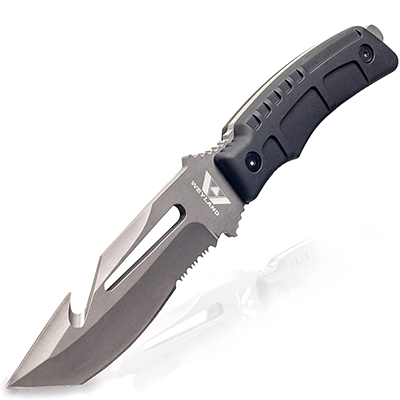
However, it does belong to the tool/weapon generation that comes after stones and clubs, serving as an important instrument to skin animals, butcher meat, and provide self-defense.
It is known that the first metal hunting knives were made of bronze around 2000 b.c. (Bronze Age) and as time progressed into the Iron Age, different styles—such as swords—were used in Crete and Britain.
Iron blades had one fault though, they bend easily. This was solved by the Vikings, who added carbon to the iron to improve sharpness and rigidity.
Now, let’s fast forward to the 1800s and the birth of the first modern hunting knife in American history—the Bowie knife. It was designed by Rezin P. Bowie in 1838 in Avoyelles Parish, Louisiana. He presented the knife to his brother, James Bowie, to use as a weapon for self-defense.
The design resembled that of a butcher knife with a thin blade. It grew in popularity following the notorious Sandbar Fight in 1827 where James Bowie was shot through the lung during a duel. In one final act of determination, he found the strength to raise himself up and sink his knife into the heart of his killer.
What is the Modern Day Hunting Knife?
Bowie made the hunting knife legendary, and from that point on, it has evolved over the years to become a necessity for the modern-day hunter.
Its design consists of a rigid stainless steel blade, a large handle for a strong grasp, and an unsharpened portion of the blade called the “tang” that enhances strength.
The many different types of hunting knives serve specific purposes for skinning, butchering, and more.
However, it’s crucial to emphasize that a hunting knife isn’t typically used for actually killing most animals. That’s because its purpose isn’t to stab but rather, to slice and cut.
Let’s look at the different parts of a hunting knife to get a better idea of the design. Bear in mind that not all hunting knives share the same design features.
- Point: This is where the blade meets the spine to form the sharp tip of the knife.
- Belly: This is the curved edge of the knife that enhances cutting length for skinning.
- Edge: This is the part of the blade used for cutting.
- Spine: This is the back of the blade and supports the overall structure of the knife.
- Bevel/Secondary Bevel: This is the cutting edge angle, with the secondary bevel serving to lighten the blade for a sharper bevel.
- Hilt: This is equipped with a crosspiece to keep the fingers from slipping onto the blade.
- Choil: On the non-sharpened part of the blade you’ll find an indentation called the choil. This enables the user to do detailed work on an animal.
- Jimping: This is a rough area on the spine to give the thumb a place to rest without slipping while hands are at work.
- Pommel: This is an enlarged section at the top of the handle used as a hammer to pound or crack.
Now that we’ve got that down, let’s discuss what hunting knives can do!
What Are Hunting Knives Used For?
Cutting, slicing, gutting, deboning…a high-quality hunting knife is a multi-purpose tool that allows you to accomplish various tasks with precision and efficiency.
Gutting
Field dressing or removing the animal’s organs is one of the first and main things a hunting knife is used for to preserve the meat.
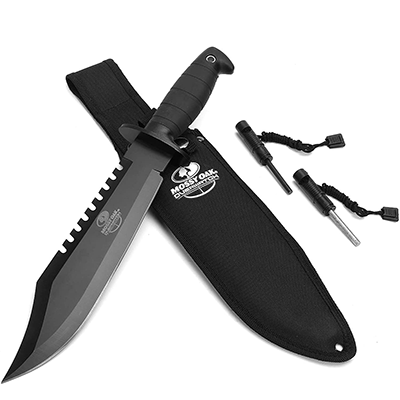
Skinning
After removing the organs, a hunting knife can then be used to seamlessly cut through the animal’s skin without tearing the muscles and tissues.
Deboning
For separating the meat from the bones, a quality hunting knife is used to reduce damage to the flesh, whether you’re working with a big game or fish.
Butchering
After removing the meat, the hunting knife can be used to butcher the meat by applying different techniques to get clean cuts.
Caping
This type of technique focuses on skinning the head and neck of an animal to make it into a hunting trophy.
What to Consider When Choosing a Hunting Knife
As mentioned, there are numerous types of hunting knives, so you’ll want to take the time to think about what exactly you want to use yours for.
Paying for quality is a must to ensure you’re able to make fast, clean work of your game. Here’s what to consider when shopping around:
Sizing
Typically, you’ll want to hold the knife and gauge how it feels. It should match the size and strength of your hand. A solid grip is important to help maintain control, especially when hands get slippery from blood during fieldwork.
If the knife feels too heavy or uncomfortable, this could lead to muscle strain. The best course of action is to try out different sizes to get a bearing for what feels natural.
Type of Steel
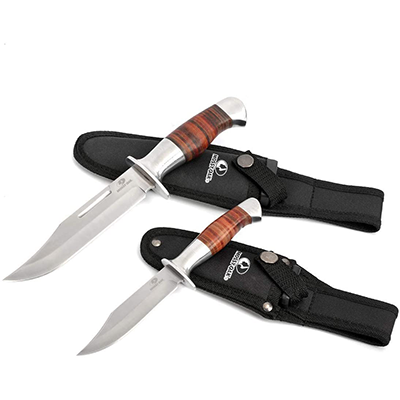
Hunting knives are manufactured from either stainless steel or high carbon steel. Stainless is generally cheaper yet still highly durable. You’ll have more sharpening to do with stainless steel knives.
However, with high carbon, you get high quality, as it’s easier to sharpen. It doesn’t resist corrosion as well as stainless steel, though.
Blade Type
We’ll go over the different blade styles later since there are so many. The most popular types are clip point and drop point blades, while less common ones include tanto and trailing point. The blade should align with your hunting goals.
Tang Type
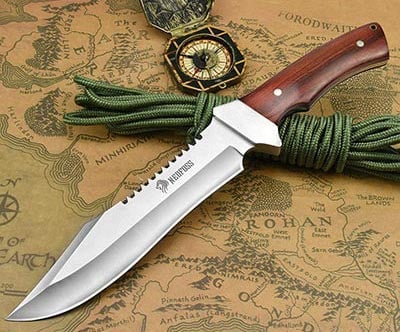
This is a feature chosen based on your hunting goals. A full tang extends the entire length of the handle for ample strength, making it suitable for survival situations or intensive work. A partial tang makes for a lighter knife to carry, and it still works well in most situations, but it is less durable.
Handle Type
A firm, non-slip grip is what to feel for when comparing knife handles. Look for materials such as rubber or Micarta and G10, which are comfortable to hold and look stylish.
Different Types of Hunting Knives
Are you ready for the grand finale? Now that you know what these knives are used for and how they’re made, in this section, we cover the different types of hunting knives for all hunting scenarios.
General Purpose Knives

For fledgling hunters looking for a solid all-around knife, a general-purpose design is your best bet. This type of knife is ideal for skinning, stabbing, cutting, and more—thanks to its sharp double-edged blade and sharp point.
A general-purpose knife is typically 4 to 5 inches long. The key here is to choose one with a comfortable, ergonomic handle that provides ample control for various types of work.
Throwing Knives
This knife isn’t for entertaining your friends! Knowing how to throw a knife is a useful technique for self-defense if you need to scare off an animal out in the field. Look for a well-balanced knife, and make sure to practice.

Skinning Knives
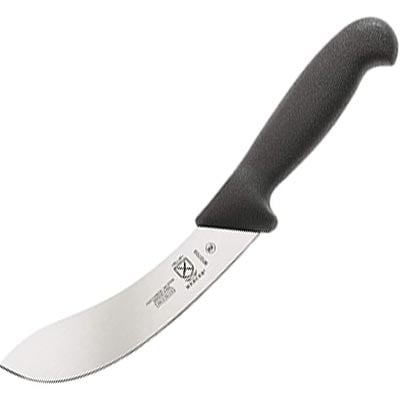
After taking down an animal, the next order of business is skinning it to preserve the meat. A high-quality hunting knife should cut through the skin easily without damaging the meat.
Look for a blade that is short, curved, and sharp. The handle should be made from non-slip material to keep your hand from sliding onto the blade while skinning.
Camp Knives
If you’re not a frequent hunter but still want a knife that can serve the purpose, a camping knife is a good all-around choice.
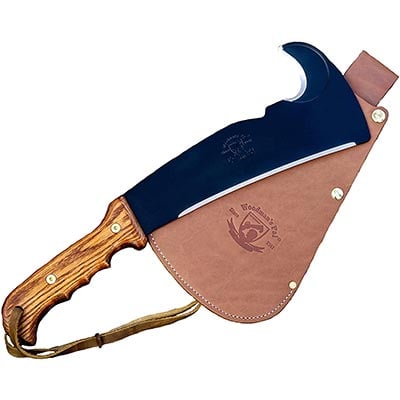
It features a drop point blade that is multi-functional for outdoor tasks but also works for most hunting tasks.
Caping Knives
Sometimes a legendary catch deserves to be remembered forever, and that’s when a caping knife comes in handy. This type of knife is short and sharp, designed specifically for skinning the head and neck of a deer, boar, or bear to be mounted on a wall.
Boning Knives
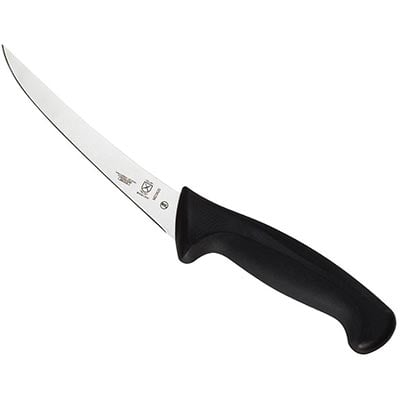
After skinning an animal, you’ll need a boning knife to carefully separate the meat from the bones. This type of knife is designed with a slender, flexible blade that should effortlessly slice through meat like butter.
Different Types of Blade Styles
You probably already have a good idea of what your dream knife blade looks like, but below, we’ve outlined the exact terms to know while browsing the market.
Clip Point

This is a traditional knife design, available in curved and straight styles to better align with your needs.
You’ll commonly see this type of blade with Bowie knives, fixed knives, and pocket knives. It features a sharper tip that is useful for stabbing prey.
Bear in mind that it is a narrow blade, providing less control compared to a drop point.
Drop Point
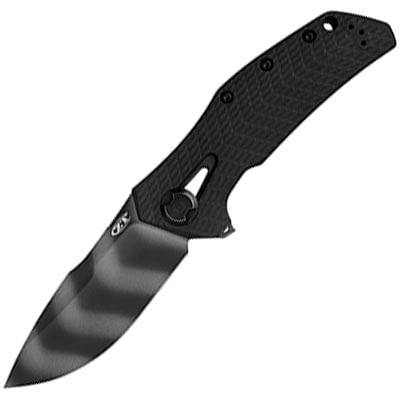
For multitasking without having to switch between knives, the drop point can complete most hunting tasks—with a sharp, thick edge and a bigger belly for slicing. A curved blade further enhances control when you’re doing fieldwork.
However, note that this is not an ideal stabbing blade due to a lack of a sharp tip.
Skinner/Trailing Point
If you want to slice and skin like a pro, this is the type of blade to get the job done. It’s lightweight with a curved back edge. The point is weak, so it’s not ideal for stabbing.

Hunting Knife Features
Before we conclude this guide about types of hunting knives and their uses, we’ll cover features that you’ll probably come across on your search, as they are the most common and useful.
Fixed Knives

This simply means that the blade is fixed in place and doesn’t fold down. These tend to be stronger since the blade is embedded within the handle, increasing support.
Folding Knives
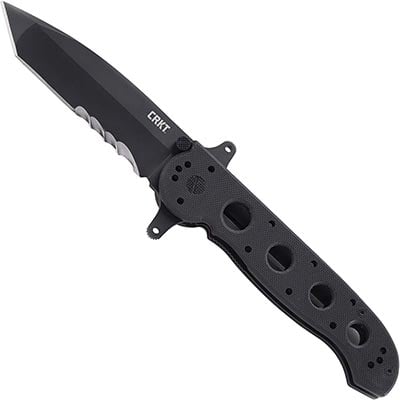
Folding knives feature a blade that folds down into the handle and are popular since they are easier to carry around. They are also multi-purpose for everyday tasks, which is also why they are sometimes referred to as pocket knives.
However, folding knives are difficult to clean due to moving parts, and also lack the strength and control that fixed knives provide for doing messy, intensive fieldwork.
Serrated Knives

This means that the knife features a toothed edge that works like a saw. This type of blade is ideal for cutting through tough materials, including fabrics, rope, cables, leather, and cooked meat.
Knife Sheath
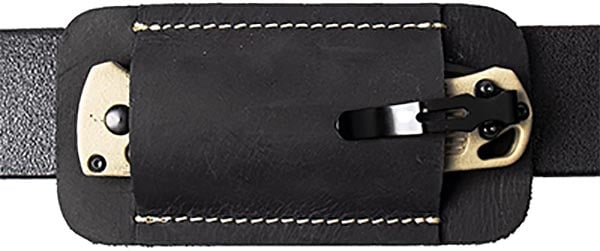
When not in use, your hunting knife rests inside a knife sheath. This accessory is made from soft materials, such as leather, nylon, or kevlar. It serves as a carrier to protect the knife from damage and protect the user from injuries.
Types of Hunting Knives Conclusion
Choosing a hunting knife can be overwhelming since there are so many styles on the market. This ancient tool has evolved over the centuries, with each innovative feature serving a specific purpose—from stabbing to slicing and skinning.
When considering the different types of hunting knives, the best starting point is to establish your goals and how you plan to use the knife. Our guide can help you narrow down the features that are most essential to your needs, so you can go out into the field with confidence!
Resources & References:
- Stay Sharp: Knife Safety Basics, NRA Family.
- The Best Animals to Hunt For Beginners, Ranker.
- How to Sharpen a Knife, onX Maps.